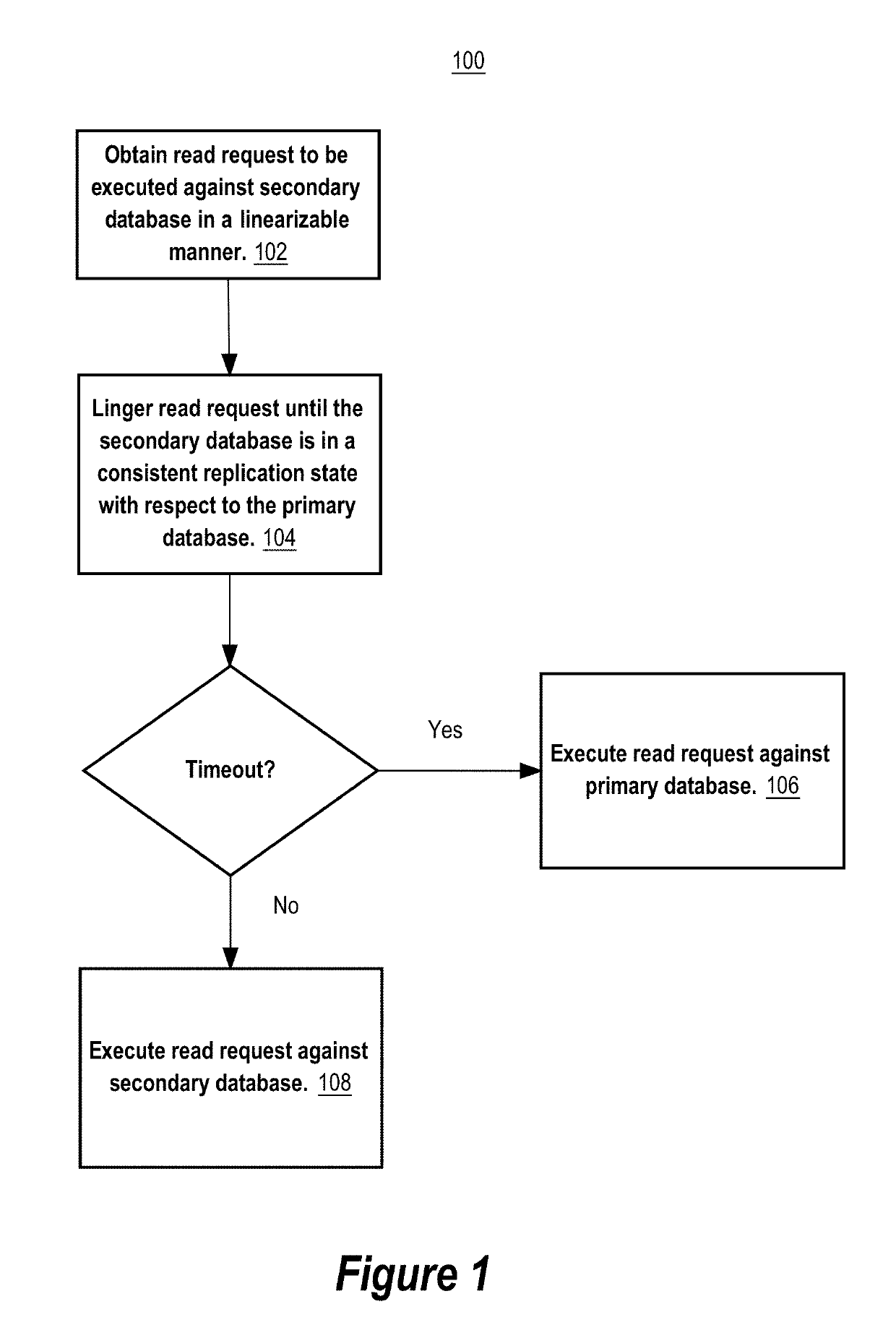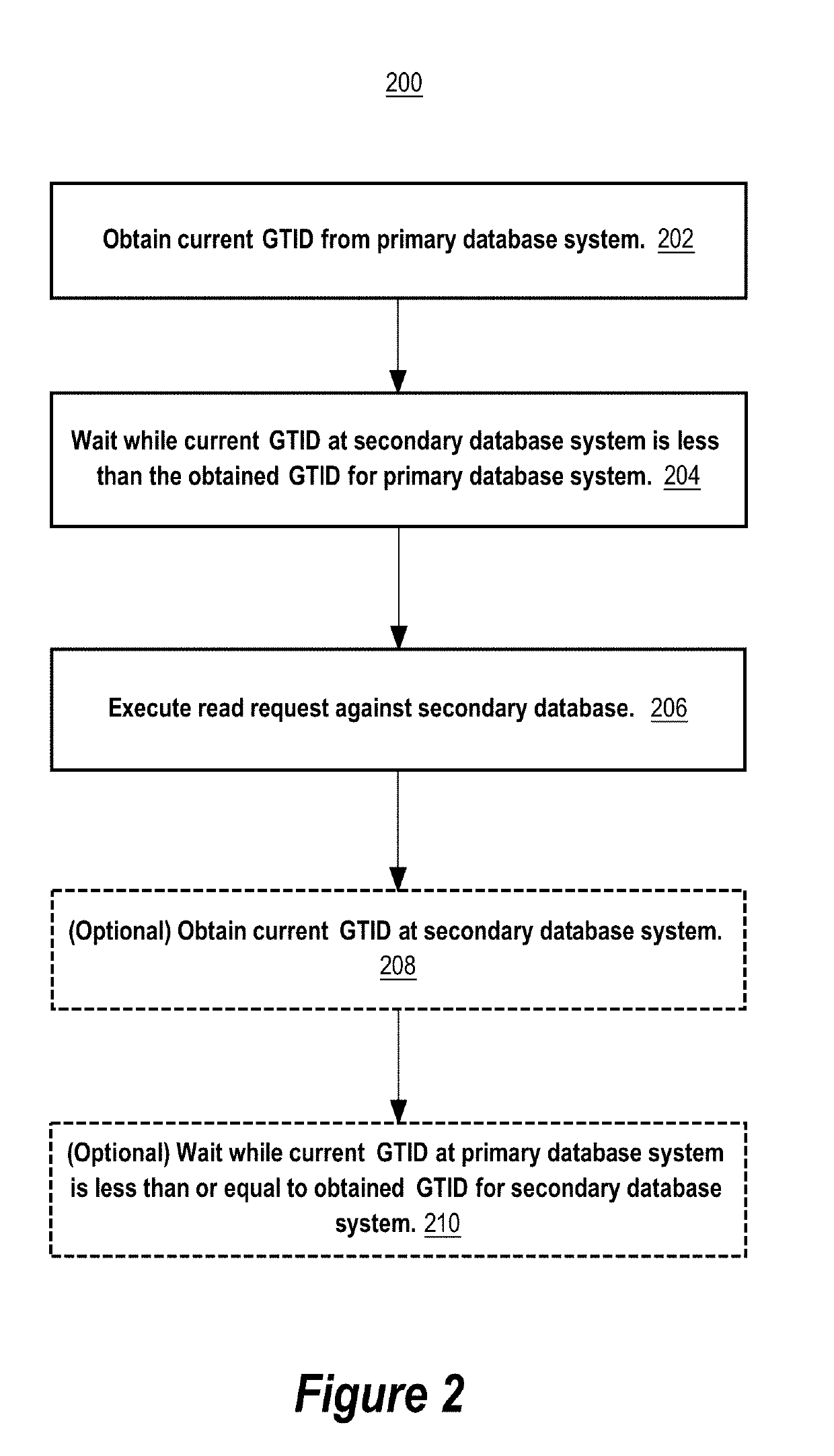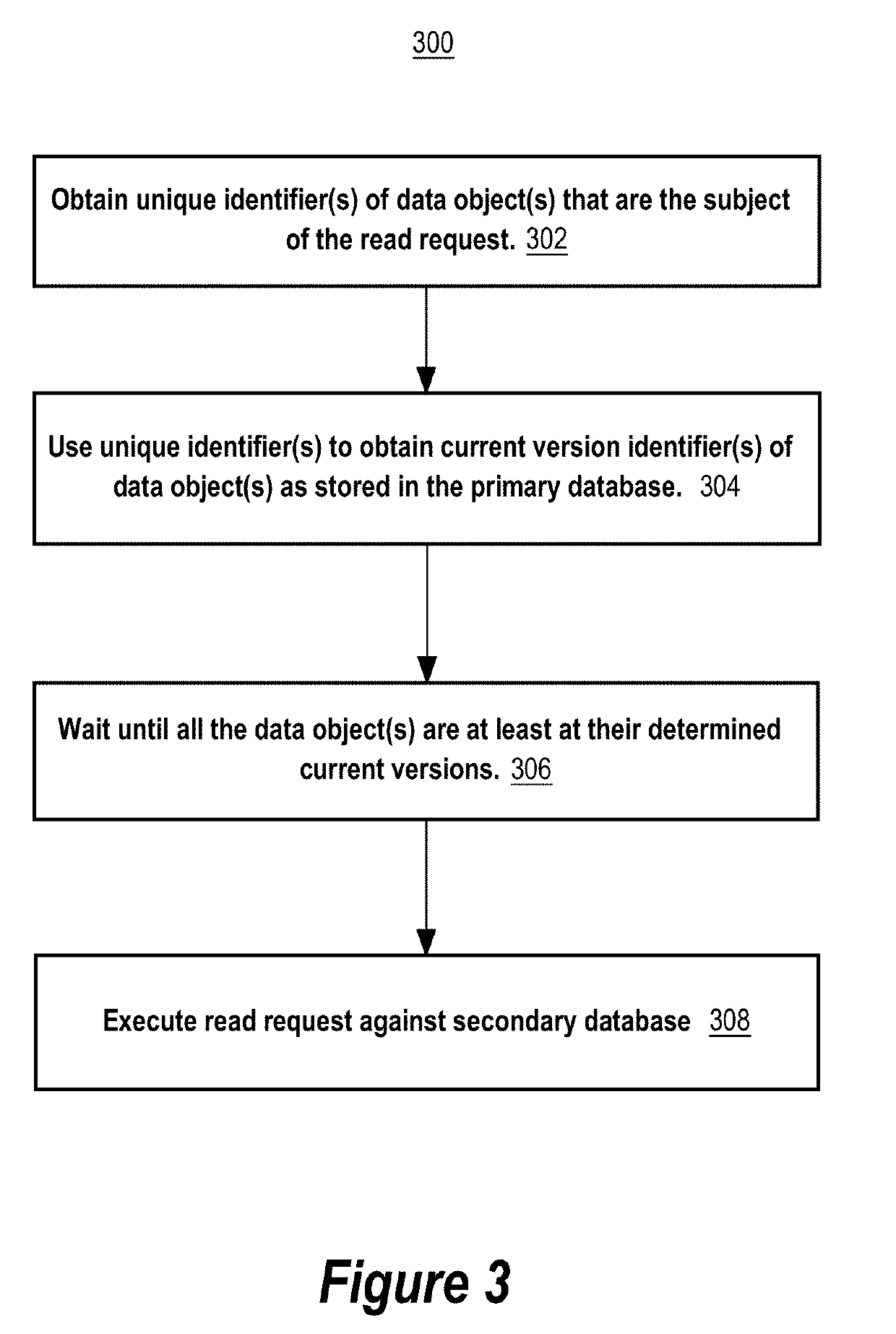Techniques for a linearizable primary-secondary database system that replicates database data with eventual consistency
a database system and database technology, applied in the field of computer implementation techniques, can solve the problems of insufficient use of computer systems storing secondary copies, inability to provide linearizable read and write operations to clients, and inability to provide linearizable primary and secondary database systems together
- Summary
- Abstract
- Description
- Claims
- Application Information
AI Technical Summary
Benefits of technology
Problems solved by technology
Method used
Image
Examples
Embodiment Construction
[0017]The techniques herein address issues with primary-secondary database systems that use non-consensus, active-passive, or eventually consistent database replication to replicate data from the primary database system to the secondary database system. In general, in such systems, read requests from clients of the primary-secondary database system may not be served in a linearizable manner if some of those read requests are served by the secondary database system. This is because the secondary database may not be up-to-date with respect to the latest (recent) transactions that have been committed to the primary database at the time the read request is being processed by the secondary database system. For example, a client that submits a write request to the primary database system to update data in a particular database field of the primary database, and then submits a read request to the secondary database system thereafter, may receive an older version of data in the particular d...
PUM
 Login to View More
Login to View More Abstract
Description
Claims
Application Information
 Login to View More
Login to View More - R&D
- Intellectual Property
- Life Sciences
- Materials
- Tech Scout
- Unparalleled Data Quality
- Higher Quality Content
- 60% Fewer Hallucinations
Browse by: Latest US Patents, China's latest patents, Technical Efficacy Thesaurus, Application Domain, Technology Topic, Popular Technical Reports.
© 2025 PatSnap. All rights reserved.Legal|Privacy policy|Modern Slavery Act Transparency Statement|Sitemap|About US| Contact US: help@patsnap.com



